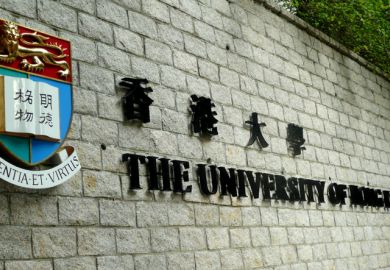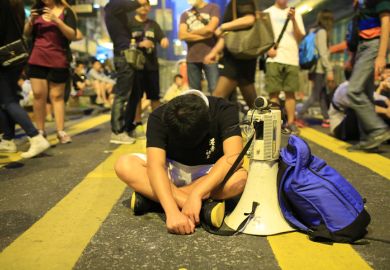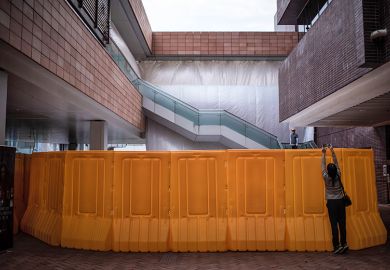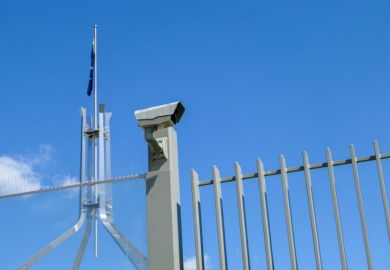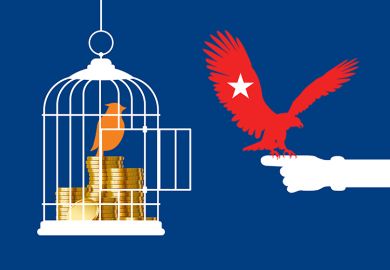It is always a sign something shameful is happening when those responsible choose to execute their designs in the middle of the night. In Verdi’s opera Rigoletto, the assassin hired by the eponymous court jester brings him the promised body in a sack at midnight. But the body is not that of Rigoletto’s enemy and patron, the Duke of Mantua, who seduced his daughter, but his dying daughter, who sacrificed herself for the duke out of love. Thus is he rewarded for his faith in malice and his trust in the powerful.
In Hong Kong, it is freedom that is dying. Erosions of the rule of law and the extent of repression in the former British colony have been a matter of international concern ever since pro-democracy protests erupted in June 2019. In June 2020, China imposed a national security law on Hong Kong to suppress all voices of dissent, in breach of the 1984 Sino-British Joint Declaration and the Basic Law of Hong Kong. This has prompted tens of thousands of Hongkongers to relocate (flee) to the UK, while dozens of human rights defenders in Hong Kong are being arbitrarily detained without bail or due process.
As Hongkongers reeled from the city’s sham Legislative Council elections on 19 December 2021, the University of Hong Kong added another act to Hong Kong’s ongoing tragedy.
The city’s oldest institution of higher learning (1911; motto: Sapientia et Virtus) decided to be an enforcer of China’s national security law. In the wee hours of 23 December 2021, it dismantled and removed the Pillar of Shame, a statue commemorating victims of the 1989 Tiananmen Square massacre that had sat on the university’s campus since 1997. University administrators, perhaps to cover the shame they ought to see in themselves, hid the entire operation behind tarpaulins and sought to prevent journalists and students from accessing or filming it. Yet it hit global headlines anyway.
It is beyond dispute that the University of Hong Kong does not own the statue, created by Danish sculptor Jens Galschiøt in 1996. Since last summer, the university had been seeking its removal by its “legal guardians” (many of whom have since been detained under China’s national security law, including Cambridge-educated barrister and activist Tonyee Chow Hang-tung) – even though its law firm, Mayer Brown, withdrew its representation on the matter as its representation became a subject of international condemnation.
It is unclear the extent to which the statue may have been damaged and what its fate will be, but the university has, prima facie, committed criminal damage and theft. Section 60(1) of the Crimes Ordinance states that “a person who without lawful excuse destroys or damages any property belonging to another intending to destroy or damage any such property or being reckless as to whether any such property would be destroyed or damaged shall be guilty of an offence”. Section 2(1) of the Theft Ordinance states that “[a] person commits theft if he dishonestly appropriates property belonging to another with the intention of permanently depriving the other of it; and thief and steal shall be construed accordingly.” Rules of estoppel come into play as the university had allowed on sufferance the statue to remain on its campus for 24 years; the university’s hands, as a court of equity would likely hold, are very dirty indeed.
In a statement issued later on 23 December, the university justified its action on account of “potential safety issues resulting from the fragile statue” and “legal risks to the University based on the Crimes Ordinance enacted under the Hong Kong colonial government”.
The Pillar of Shame had withstood storms far better than Hong Kong’s academic freedom, but one was loath to expect a supposedly world-leading university to behave like low-level gangsters, spiriting away property belonging to another person under cover of darkness without regard for legal process or lawful authority. Nevertheless, memories do not get “disappeared” by removal of memorials. By its clandestine operation, the University of Hong Kong has simply transformed into Hong Kong’s new Pillar of Shame par excellence to embody and illuminate the meaning of rule of law in a society it claims to educate. As an alumnus who read law a mere two years after “one country, two systems” was promised to Hong Kong people – with the lies that underlay it – I am filled with the utmost disgust and despair.
What astonishes me even more, however, is the abject silence of scholars and students around the world, who were so brave as to call for boycotts, divestment and sanctions – if not direct humanitarian intervention – in response to human rights violations in the likes of Israel, South Africa and Kosovo. With cancel culture now all the rage, statues of Cecil Rhodes and Winston Churchill have fallen; where is the world’s righteous outrage over the felling of the Pillar of Shame?
The #MeToo movement has taught us every voice matters, and that every unaddressed historical injustice is an ongoing injustice. At a time when Hong Kong people’s voices are being silenced and injustices in Hong Kong and in China being erased from memory, we all know what we can and should do. It is another matter whether one chooses complacency, cowardice, complicity, collusion, corruption and co-optation, as opposed to character, commitment, credibility, courage, conscience and moral clarity – not in good times but in times of crisis.
Through its actions, the University of Hong Kong has made abundantly clear its choice – to act as an arm of the Chinese Communist Party as the Party consolidates its totalitarian control over all aspects of Hong Kong society. Now scholars, students, alumni, universities, research funders, donors and governments the world over must make theirs.
Phil C.W. Chan is a legal scholar and recipient of the 25th Human Rights Press Awards (Merit, 2021) for Commentary Writing for his three-part South China Morning Post series in 2020 on Hong Kong society under China’s national security law. His books include China, State Sovereignty and International Legal Order (Brill, 2015).
Register to continue
Why register?
- Registration is free and only takes a moment
- Once registered, you can read 3 articles a month
- Sign up for our newsletter
Subscribe
Or subscribe for unlimited access to:
- Unlimited access to news, views, insights & reviews
- Digital editions
- Digital access to THE’s university and college rankings analysis
Already registered or a current subscriber?

